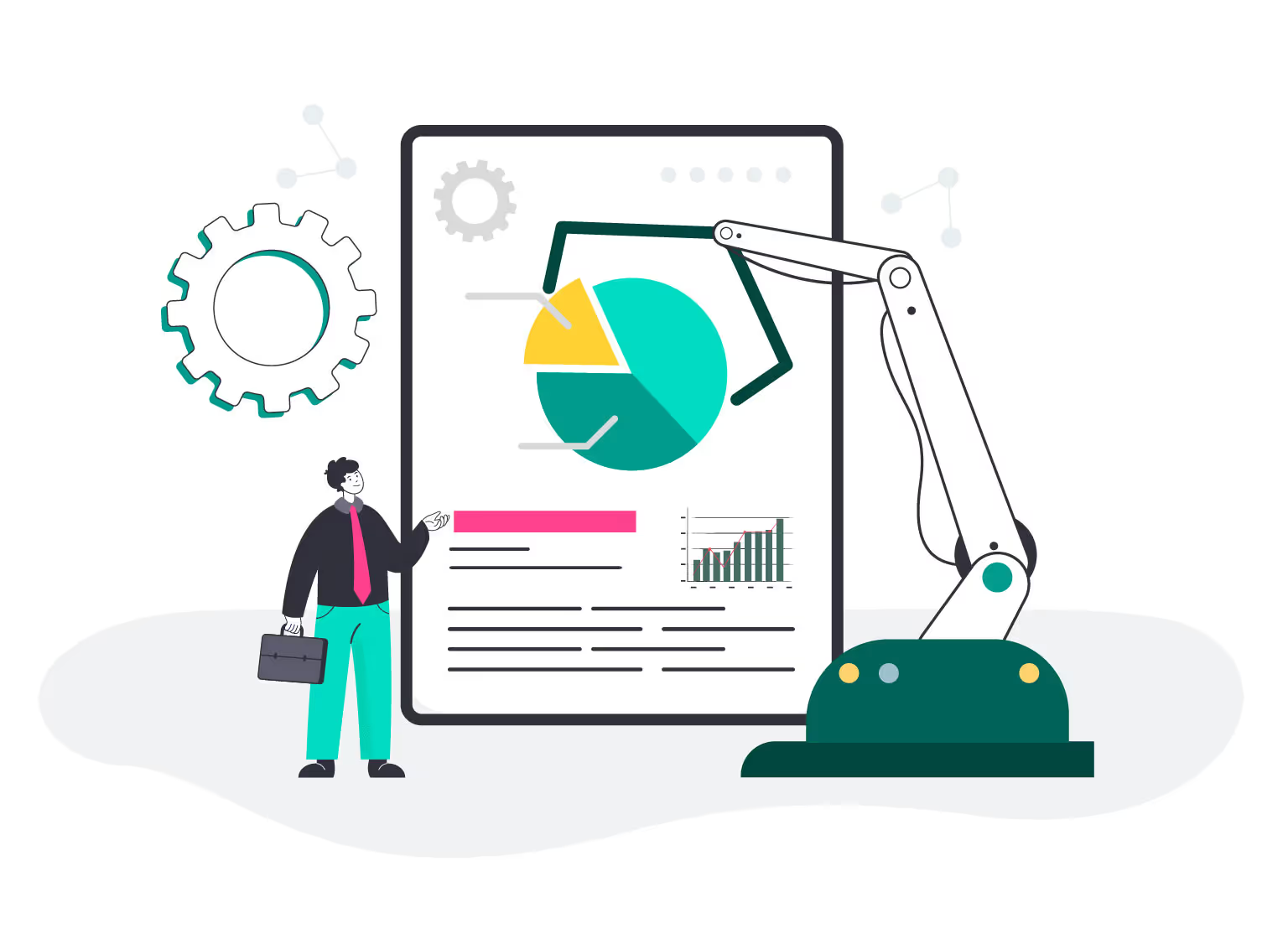
Blog
Types of Sample Incentive Plans for Employees
June 15, 2024


Key Insights
Recognizing your employees is far easier than moving a mountain.
All it takes is a congratulations. Maybe a certificate of appreciation. Or let's take a big leap and give them a cash bonus.
If you are thinking what effect does this little gesture have on your employees? Well, the effect is far deeper than you can imagine.
From motivating your employees to work better to driving your company to greater success, the list is endless.
That is why we have compiled this article for you. To make you understand what an employee incentive plan is, its benefits, types, and a few successful examples.
We will also guide you in starting an incentive program of your own to some best practices to optimize its overall impact.
So let's begin the reading.
What is an Employee Incentive Program?
Companies have a set of expectations from their employees.
Improved performance, positive behavior, on-target achievements, and immense contribution to the company are just the tip of the iceberg.
A simple but powerful tool that helps companies meet these expectations is an employee incentive plan.
It is a structured system to motivate, recognize, and reward employees for meeting the company objectives.
Through this initiative, companies aim to boost productivity, foster engagement, and promote positive behavior.
Thus an employee incentive program can impact your overall business operations and growth.
Benefits of Employee Incentive Programs
Employee incentive program acknowledges your employee's contributions and recognizes them for their achievements.
Such a positive tool is bound to provide a wide range of benefits to your company and its operations.
- Employee incentives motivate your employees and boost their productivity.
- It helps align the individual targets with the larger company objectives.
- Employees remain loyal to an organization that recognizes and rewards their efforts.
- This means companies will face lower employee turnover rates.
- Incentives help build positive workspaces with a more engaged workforce.
- Companies that offer competitive incentives easily attract top talents.
- Employees will be innovative and take the extra step to fulfill their tasks.
- All these positive initiates will help enhance your employer branding
The perks of recognizing and rewarding your employees are not limited. From employee satisfaction to company branding it can positively impact all areas of your operations.
Types of Employee Incentives
Now there are a variety of ways you can recognize your employees.
Broadly it can be divided into monetary and non-monetary rewards.

Monetary Incentives
These are the financial rewards you give your high-achieving employees for their contributions. The perk of providing monetary reward is that it offers financial stability to your workforce.
When a workforce feels financially secure, it helps them focus on their work and targets with better focus.
A few examples of monetary incentives for managers and executives and other employees are:
- Spot Bonuses
- Performance-based Raises
- Commission Programs
- Profit-sharing
- Referral Bonuses
- Equity and ESOP
Non-Monetary Incentives
These are non-financial rewards for your workforce. Receiving these rewards creates a sense of satisfaction and achievement in the employee contributions.
It is the non-monetary rewards that make the employees feel loyal, attached, and belong to their organization.
A few ways you can build this connection with your employees are:
- Professional Development Opportunities
- Public Recognition
- Paid Time Off
- Flexible Working Schedule
- Wellness Programs
- Gift Cards
Examples of Successful Employee Incentive Programs
Employee incentive programs have a crucial role in employer branding.
In fact, it is a key determinant when it comes to proposal acceptance.
All top companies make sure that they provide attractive benefits to their employees as a part of building positive workspaces.
Google’s Comprehensive Approach
Google provides world-class benefits focused on your physical, financial, and emotional well-being.
Apart from the usual health support, Google provides access to mental health apps, fertility and growing family support, support programs for menopause benefits, caregiver leave, elder care and support, etc.
Some of Google’s benefits are unheard of or unconventional in the current workspace.
Apple’s Personalized Touch
Apple strives to make a difference in the lives of its employees with its employee incentive programs.
From a flexible medical plan that covers both physical and mental healthcare, paid time away to care for an ill family member, free guidance to help find childcare, stock options, retirement plans, and virtual learning opportunities - Apple has a lot covered.
Through these initiatives, Apple creates a workspace where their employees feel secure and valued.

Hubspot's Excellence Program
Hubspot strives to create a remarkable employee experience that goes beyond benefits and perks.
They aim to create a culture of flexibility, learning, and belonging. They achieve these goals with remote work options, health coverage for physical and mental health, leadership development and unlimited vacation.
Their employee incentive program thus builds a company where employees grow.
These examples show how companies are building success through employee satisfaction and happiness.
Stories like these must lead you to building effective incentive programs that drive growth and success.
Monetary and non-monetary rewards have their own purpose and benefits.
It falls on the company to decide the appropriate reward that can create a feeling of specialness in your employees, just like a discretionary bonus example.
How to Start an Employee Incentive Program
To begin with, you just don't kick-start an incentive program. It needs time, thought, and effort.
Businesses need to take a systematic path to build an effective employee incentive plan that provides the desired outcomes:

Begin with an Objective
Think about why you need an incentive program. Understand what you aim to achieve out of this reward system. Answers to these questions will help you find your objectives.
Study your Audience
Ask your employees what their needs, preferences, and requirements are. Take their likings to your considerations. This will improve the effectiveness of your incentive program.
Find the suitable Incentives
You know there is a large variety of incentives available. Offer those incentives that come within your budget and resource capacity. Provide what you promise.
Set structure and rules
Create rules for your incentive program. Create a working module for your program, and set eligibility criteria and payment period. This gives a system and structure for your plan.
Clearly Communicate
Communication is the key to effectiveness. Make your employees aware of the incentive program, how they can earn these rewards, what is expected of them, and other terms and conditions.
Implement and Monitor
Implementing the program is not the last stage of the process. You need to keep a close watch on its effectiveness, and how well it's able to give the desired results and take notes.
Evaluate and Improve
Regular review of the employee incentive program is inevitable. You need to be on the lookout for areas of strength and improvement. This will help make the required changes that help maintain the effectiveness of the program.
The distance between the start and finish of an incentive program is not linear. It's cyclic.
This means you will go through these steps over and over at regular intervals.
With the market trends and dynamics, building an employee incentive program is an ongoing process.
Best Practices for Implementing an Incentive Program.
Let me give you a piece of advice. All because you designed an employee incentive program doesn't guarantee the desired outcomes.
So here is a list of best practices checklist for you to check if you are on the right path of implementation:
✅Make sure your incentive program aligns with your company objectives.
✅Always set SMART (specific, measurable, attainable, relevant, and time-bound) goals.
✅Provide fair and transparent incentive program management.
✅Ensure your workforce understands the specifics of the incentive program.
✅Gather employee feedback to assess their satisfaction with the incentives.
✅Keep your incentive pool diverse to meet unique employee preferences.
✅Deliver the incentive rewards on time.
✅Be flexible to update based on market changes and employee preferences.
Following these practices closely as a part of your routine incentive management will help ensure its success and effectiveness.
How is an employee incentive program different from employee benefits?
How often should I incentivize my employees?
The frequency of incentivizing your employees is a subjective decision.
It depends on various factors including:
- Company objectives
- Budget availability
- Their company culture
- Employee performance
- Industry norms
- Their motivational objectives
It is not about how often you provide incentives and rewards to your employees.
It is about how effectively the incentive program can positively impact your workforce and bring the desired results.
Just a give you a simple overview, brainstorming ideas for rewarding remote employees can have a significant impact on their performance and productivity.
Are incentive programs a good business tactic?
The answer is simple: YES.
Incentives have the power to optimize your overall business operations. It can motivate employees, boost productivity, enhance engagement, and foster positive work culture.
These positive employee initiatives will eventually help drive organizational growth and success.
Incentive programs are a good business tactic and capital that will give you a good return on investments.
Final Thoughts
The workspace as we know is changing. It is breaking the conventional way of employee management and creating new definitions.
In such a modern and innovative workspace, the significance of employee incentives is inevitable.
With increasing demand for incentive programs and rewards, you must be aware of the innovative ways to keep your program updated.
That is why Kennect is here to supercharge your incentive program.
We deliver a transformative approach to commission management, combining seamless automation with impeccable data accuracy and a user-friendly platform.
Our incentive automation solution automates your entire sales incentives process, saving you time and ensuring accuracy. No more spreadsheets, no more errors – just efficiency.
Know more about our solution. Book A Demo NOW!
ReKennect : Stay ahead of the curve!
Subscribe to our bi-weekly newsletter packed with latest trends and insights on incentives.
Thank you! Your submission has been received!
Oops! Something went wrong while submitting the form.
Your data is in safe hands. Check out our Privacy policy for more info















